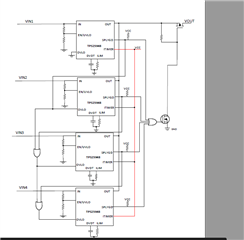Other Parts Discussed in Thread: TPS2412, TPS2413, , LM74700-Q1, TPS25948
Hi TI,
Due to the client's requirements, I have designed a power structure. Could you please help me confirm if my selection parts is feasible? Or do you have any better suggestions? If there are any deficiencies in my design, please let me know as well.
Due to my client's requirement for three power inputs (including 2*12V + 1*PD) to serve as redundancy, I have implemented a set of ORing circuits for isolation. Additionally, I have incorporated a Buck-boost converter due to the wide voltage range of the "3. USB-C" input. Is this approach correct, or do you have any other suggestions? Y
Please advise. Thank you.

BR, Delun


